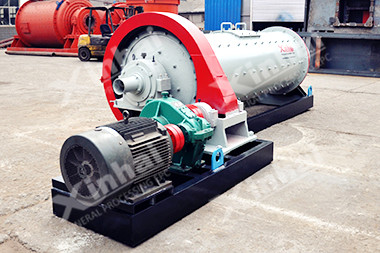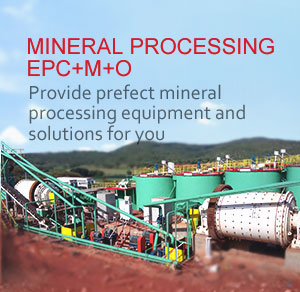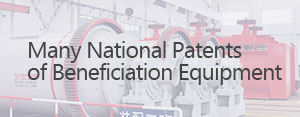- Home
- About
-
Mineral Processing EPC+M+O

Providing optimized solutions for your mine, one-stop service for mineral processing plant!
View details -
Product
- Grinding
- Classifying
Grinding & Classifying
- Flotation
- Gravity Separation Equipment
- Magnetic Equipment
- Gold Extraction Equipment
- Washing Equipment
Separating Process
- Thickening
- Dewatering Machine
Thickening & Dewatering
- Accessories
- Auxiliary Product
Consumables

Xinhai mineral processing equipment mainly include: grinding equipment, flotation equipment, dewatering equipment, magnetic separation equipment, and so on. Some of the equipment is Xinhai independent research and development, and has been awarded national patent. View details
-
Solutions
- Gold Tailings
- Tailings
Tailings

Gold CIP Production Line adsorbs gold from cyaniding pulp by active carbon including 7 steps: leaching pulp preparation, cyaniding leaching, carbon adsorption, gold loaded carbon desorption, pregnant solution electrodeposit, carbon acid regeneration, leaching pulp. View details
- Case
-
News
- Contact
Mineral Processing Technology
2025-04-25 XinHai Views (15)Mineral Processing Technology
1. Definition
Mineral processing technology is a means of separating gangue (waste material) and valuable components according to the properties and occurrence forms of minerals in the ore. The process entails crushing and grinding the ore, followed by techniques such as gravity separation, flotation, magnetic separation, and electric separation. These techniques are employed to separate valuable minerals from gangue minerals and to isolate co - existing valuable minerals, while eliminating or reducing harmful impurities for use in smelting or as industrial raw materials.
2. Purpose
The main aim of mineral processing is to enrich valuable components, cut down on fuel and transportation consumption during smelting or processing, and make the economic utilization of low - grade ores possible. Data from mineral processing tests are the primary basis for evaluating ore deposits and designing processing plants.
3. Methods
Mineral processing uses a variety of techniques, which are classified as follows:
l Physical Methods
These include washing, screening, gravity separation, and magnetic separation.
l Chemical Methods
Such as flotation with reagents and leaching.
l Biological Methods
Including bacterial oxidation.
For instance, low - temperature sulfidation roasting - flotation is used to recover copper, gold, and silver from low - grade combined oxidized copper ores. This method has advantages like low cost, a simple process, low equipment investment, low energy consumption, and being pollution - free.
4.Products
The main products of mineral processing are:
l Concentrate
Enriched with valuable components, serving as raw materials for metallurgy (metal minerals) or other industries (non - metal minerals).
l Tailings
Containing mainly useless components.
l Middlings
Intermediate products that need further processing.
In addition, coal products are refined through mineral processing to produce cleaner coal.
5.Historical Development
In 1867, Rittinger's work "Mineral Processing" laid the foundation for this field. By 1903, Richards' "Mineral Processing" established it as an independent engineering discipline.
6.Evolution
Over time, mineral processing has developed from dealing with coarse materials to fine materials, from simple to complex ores, and from physical methods to physicochemical and chemical methods. Early techniques involved manual selection and simple washing tools. In China, early methods relied on physical properties without changing the mineral composition, initially named "ore selection" for metals and later extended to "mineral selection" for non - metals. Modern processes now include chemical recovery techniques.
How Hard Rock Lithium Processing Works: Mine to Market
It is vital for the stakeholders of the technology and energy sectors to understand how the hard rock lithium processing is conducted – from the first extraction of the mine to its final market form.... [more]
No Next
Related Article
- What are the Technologies for Lithium Production
- Gold Heap Leaching Summery
- How Hard Rock Lithium Processing Works: Mine to Market
- Global Mining Industry Analysis: Trends, Challenges, and Opportunities in 2025
- Phosphate Ore Processing and Beneficiation Plant Design: A Comprehensive Engineering Approach
- Titanium Ore Beneficiation: Navigating Global Supply Shifts with Advanced Processing Solutions
- Lithium Ore Processing Methods: Efficient Extraction Techniques for Battery-Grade Lithium
- Improving Graphite Ore Processing for Efficiency and Purification
- Chrome/Chromite mining company in South Africa
- Efficient Chrome Ore Gravity Processing Plants: Cost-Effective Solutions for Mineral Recovery
Mineral Processing EPC
Solutions
CONTACT US
- Tel: 0086 15901320633
- Fax: 0086 10 59621207
- Email: mhxu@xinhaimining.net
© 2017 Shandong Xinhai Mining Technology & Equipment Inc. Technical Support: Beijing Xinhulian Technology Co., Ltd.
Factory Address: No. 188, Xinhai Street, Fushan high-tech industrial development district, Yantai, Shandong, China






